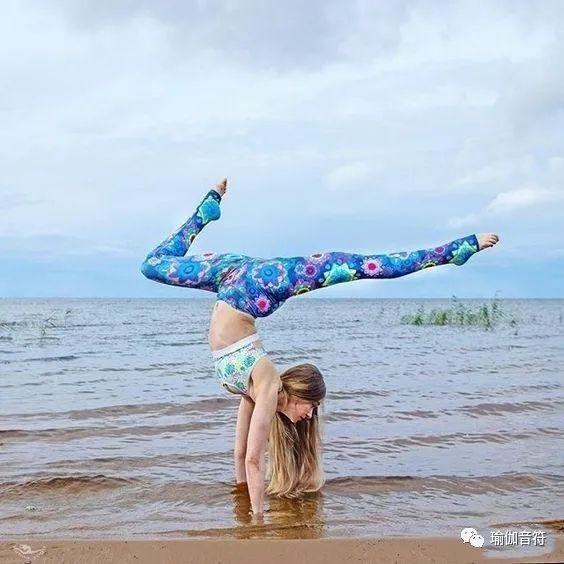There is a kind of asana in yoga called standing balance asana
. 
For example, the tree pose, the warrior three pose, the fighting posture, holding the big toe and so on all belong to the standing posture balance pose
. 
When it comes to how to maintain stability and better maintain the balance of the body in such asanas, I believe everyone knows what foundation should be stable, start the strength of legs, waist and abdomen muscles, find a fixed gaze point, focus and so on
. 
I believe everyone knows this and is paying close attention to it
. 
But in the exercise this morning, I found a small problem to share
. 
Let’s compare our exercise to see if there is the same problem
. 
Let’s give a simple example, such as standing on one leg with hands grasping big toes
. 
In the figure below, you first think about what you should pay attention to if you want to maintain balance and stability in this pose? (you can try to analyze it yourself, go through it in your mind, and then look at the following to see if you have such a problem
. 
If you have such a problem, you will be much more impressed when you practice next time than when you look at the following directly.) generally, we will start from the foundation of the feet: 1
.
Support the palms of the legs and feet to take root downward, big toe ball Small toe ball and heel step down; The weight is spread over the entire sole of the foot; Tighten the thigh muscles, do not overstretch the knees, straighten the hips
.
2
.
Tighten the core, extend the spine and sink the shoulders
.
So the problem comes out
.
All the points we said above are about supporting legs
.
What about the upper legs? One might say that the upper leg should be hooked back on the toes
.
But that’s not enough
.
All the points of supporting the legs mentioned above must also be done for the upper legs, not just the toe hook
.
Take your feet as like as two peas
.
Find your feet on the floor, or imagine a wall in front of your feet
.
You are stepping on the wall and stepping on the wall exactly the same as three legs
.
The legs are stretched and tightened so that you can be more conducive to the balance of the body, and achieve four leveling and eight stability
.
It is called a secret weapon that makes the posture balance more stable
.
In the figure below, you can compare the figure above to assume
.
If there is a force on the upper leg to step forward or just lift it without this force, what will be the impact on the whole center of gravity and balance of the body
.
You can also stand up and feel it yourself
.
Another example is tree pose: in the figure below, the right foot palm is against the left thigh
.
Imagine that your left thigh is a wall or ground
.
Find the feeling that your right foot palm is rooted down in mountain pose and root in your left thigh
.
Warrior three pose, the warrior three pose in the figure below and the figure above, with the top toes straight
.
But still find the feeling that the whole leg extends back and takes root to the ground
.
The same is true for the half moon style in the figure below
.
Below
.
In short, no matter whether the toes of the upper feet are hooked back, straightened or butted against a part of the body like a tree, we should take the upper feet as the foundation, find the feeling of grounding the mat, not just lift it up, or focus only on the supporting legs
.
This question is not only applicable to balance asanas, but also can be used in other asanas
.
Imagine the situation where your feet are rooted forward and just lifted up, which is more conducive to physical stability and balance
.
The same is true for the handstand in the figure below
.
In yoga practice, don’t ignore any part of the body and consider the body as a whole
.
In fact, it is a whole
.
Pay attention to everything and share health and beauty..
.

